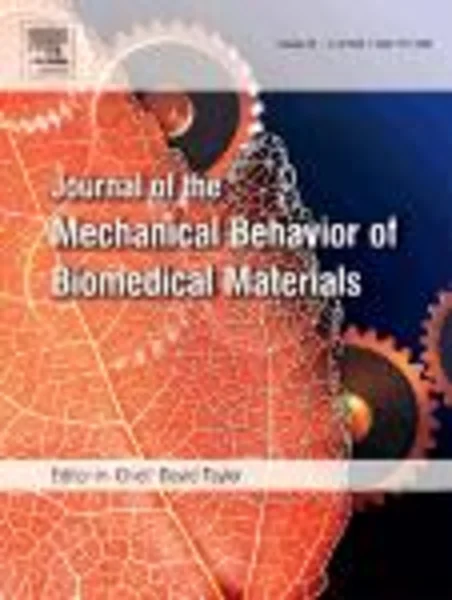-
porcine extracellular matrix scaffolds in reconstructive urology: an ex vivo comparative study of their biomechanical properties
جزئیات بیشتر مقاله- تاریخ ارائه: 1394/01/01
- تاریخ انتشار در تی پی بین: 1394/01/01
- تعداد بازدید: 676
- تعداد پرسش و پاسخ ها: 0
- شماره تماس دبیرخانه رویداد: -
functional reconstruction of the human urinary bladder has been attempted by replacing defective bladder tissue with tissue-engineered xenogenic extracellular matrix (ecm) scaffolds. however, experimental studies that demonstrate the effects of implanted ecms on important biomechanical properties such as total bladder capacity (tbc) and compliance (c) are lacking. in the current study, the effects of ecm scaffold surface area (sa) on tbc and c was assessed, ex vivo , in an ovine model (n=5). tbc and c were measured at pressures (p) of 5, 10, 15 and 20 mm hg prior to performing a 3×3 cm (9 cm2) partial cystectomy defect. equal-sized 3×3 cm (9 cm2) and larger 6×6 cm (36 cm2) urinary bladder matrix (ubm) scaffolds of porcine origin replaced the 3×3 cm cystectomy defect, and tbc and c were re-recorded for comparative analysis. the results showed that tbc decreased by 39.6%±0.005% (122.9 ml±15 ml, p<0.05) and c by 38.9%±0.51%, (δp=0-5 mm hg, p<0.05) in ovine bladders reconstructed with 3×3 cm ubm scaffolds compared to their native values. it was also found that tbc increased by 25.6±0.64% (64.2 ml ± 8.8 ml, p>0.05) and c by 24.5±0.43% (δp=0-5 mm hg, p>0.05) in the 6×6 cm ubm scaffold group compared to the 3×3 cm ubm scaffold group; however, these values were not statistically significant. the present work demonstrates that a fourfold increase in ecm scaffold sa relative to its intended defect does not lead to a significant improvement in tbc and c values.
مقالات جدیدترین رویدادها
-
استفاده از تحلیل اهمیت-عملکرد در ارائه الگوی مدیریت خلاقیت سازمانی و ارائه راهکار جهت بهبود
-
بررسی تاثیر ارزش وجوه نقد مازاد بر ساختار سرمایه شرکت های پذیرفته شده در بورس اوراق بهادار تهران
-
بررسی تأثیر سطح افشای ریسک بر قرارداد بدهی شرکت های پذیرفته شده در بورس اوراق بهادار تهران
-
بررسی تأثیر رتبه بندی اعتباری مبتنی بر مدل امتیاز بازار نوظهور بر نقد شوندگی سهام با تأکید بر خصوصی سازی شرکت ها
-
تأثیر آمیخته بازاریابی پوشاک ایرانی بر تصویر ذهنی مشتری پوشاک ایرانی (هاکوپیان)
-
تاثیر نوع استراتژی و توانمندی های سازمانی بر عملکرد: نقش میانجی تکنیک های حسابداری مدیریت
-
ارزیابی توزیع فضایی بافت فرسوده در شهر آبدانان و ارائه الگوی بهینه مداخله در آن
-
مدل سازی استاتیک مخزن دالان در یکی از میادین جنوب ایران
-
تعیین پارامتر های موثر در حمل و نقل مطلوب شهری با استفاده از روش ahp نمونه موردی شهر شیراز
-
سیرالولیاء؛ مستندترین تذکره در شرح احوال مشایخ سلسله چشتیه
مقالات جدیدترین ژورنال ها
-
مدیریت و بررسی افسردگی دانش آموزان دختر مقطع متوسطه دوم در دروان کرونا در شهرستان دزفول
-
مدیریت و بررسی خرد سیاسی در اندیشه ی فردوسی در ادب ایران
-
واکاوی و مدیریت توصیفی قلمدان(جاکلیدی)ضریح در موزه آستان قدس رضوی
-
بررسی تاثیر خلاقیت، دانش و انگیزه کارکنان بر پیشنهادات نوآورانه کارکنان ( مورد مطالعه: هتل های 3 و 4 ستاره استان کرمان)
-
بررسی تاثیر کیفیت سیستم های اطلاعاتی بر تصمیم گیری موفق در شرکتهای تولیدی استان اصفهان (مورد مطالعه: مدیران شرکتهای تولیدی استان اصفهان)
-
صنعت خودروی تجاری ایران از منظر بازگران: راهکارهایی برای توسعه
-
بررسی تاثیر وابستگی به گروه تجاری بر انتخاب حسابرس
-
واکاوی تهدیدها و فرصت های جذب سرمایه گذاری در صنعت پتروشیمی از دیدگاه کارکنان شپترو
-
the management of capital assets life cycle in petrochemical industry
-
influence of polypropylene length on stability and flow of fiber-reinforced asphalt mixtures




سوال خود را در مورد این مقاله مطرح نمایید :